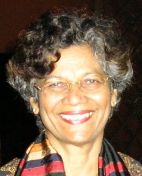-
Advocacy Theme
-
Tags
- Abortion
- Adoption
- Caregiving
- CEDAW
- Disability
- Domestic Violence
- Domestic Workers
- Harassment
- Healthcare
- Housing
- International/Regional Work
- Maintenance
- Media
- Migrant Spouses
- Migrant Workers
- Muslim Law
- National budget
- Parental Leave
- Parenthood
- Polygamy
- Population
- Race and religion
- Sexual Violence
- Sexuality Education
- Single Parents
- Social Support
- Sterilisation
- Women's Charter
Honouring those who fought for the Women’s Charter
April 11th, 2011 | News, Views, Women in Leadership
The following is the speech given by social activist and former AWARE president Constance Singam at the March 25 launch of two books marking the 50th anniversary of the Singapore Women’s Charter.
In the history of every nation, there comes a moment which can be called a defining moment. A defining moment is the point at which a situation is clearly seen to undergo a change.
And in this instance, it changed the lives of many – men, women and children – changed the way men and women viewed relationships within marriage, changed our perception about the male/female relationship and the status of women in our society.
The passing into law of the Women’s Charter was our nation’s, our society’s, our women’s defining moment.
Dr Goh Keng Swee described the Bill during the debate in the legislative assembly as a “major advance in social legislation, not only in the country, but in Southeast Asia”.
It is hard to imagine just how different the world was for women before the 1960s.
Mrs Ann Wee gives us a glimpse of that world and the atmosphere during that process. The other writers, especially Professor Leong Wai Kum, inform us about how the law applies, its impact on our lives, and its shortcomings.
However, I would like us to move away from the focus on the Women’s Charter and bring the spotlight on the women of those times: The women who formed the Singapore Council of Women (SCW) in 1952 under the leadership of Mrs Shrin Fozdar and Mrs George Lee; the women such as Madam Chan Choy Siong of the People’s Action Party (PAP); and women such as Mrs Seow Peck Leng in the Legislative Assembly – the likes of whom we have not seen in independent Singapore.
They were responsible for several very significant outcomes that need to be recorded.
It took the SCW almost a decade of lobbying the politicians to take on board the status of women and the issue of polygamy.
They were functioning in an environment that was far more conservative, far more traditional, and far more male-dominated than ones we have ever had to confront.
The various groups of women (there were 30 then) functioned along racial or clan lines. They were mostly welfare and social organisations. There was no such thing or animal as a Singapore community.
These women, who came together to form the Council, managed to mobilise women from different communities. They suspended cultural, sectional and religious differences to join together to fight for a cause. Theirs was a remarkable achievement.
That mobilisation of women was and is the most successful moblisation of women in our history. With that moblisation, those women set in motion the idea of a Singapore community – a Singapore nation. That is my first point.
The next point I want to make is that women were empowered in the process – and not just the women who were leading the process. This sense – a new sense of themselves as women, treated with dignity and respect, a sense of empowerment and celebration – was palpable.
Observing these changes, The Straits Times reported on June 3, 1962, a year after the Charter was passed, that more women were participating in community activities. For example, the annual International Bazaar in aid of the blind – the women made it the most colourful and biggest bazaar and raised $101,000 in 1960 and $120,000 in 1961. Whereas in previous years the Bazaar had collected much less – the most recorded was about $70,000.
The same Straits Times story reported that Singapore women were “taking more than a lively interest in various conferences relating to women’s interests”.
The Singapore Council of Women was also functioning in a very political environment and political parties, especially the PAP, were fighting to establish their dominance. That helped too. Then there were women within the PAP who were also campaigning for a women’s rights charter.
A confluence of forces came together to enable success: The democratic political situation; an active civil society; an NGO, the SCW; the PAP’s women members; and the socially progressive spirit of the times. The outcome was a very revolutionary document, that was, as Dr Goh said, “a major advance in social legislation”.
Will we ever again be fortunate enough to come to a time when all these forces come together?
The Women’s Charter has yet to deliver on all the promises that it made in 1961.
Mrs Singam also blogs at Living Life At 70.
Find out more about the recently launched books, Singapore Women’s Charter: 50 Questions and Singapore Women’s Charter: Roles, Responsibilities & Rights In Marriage, here.




